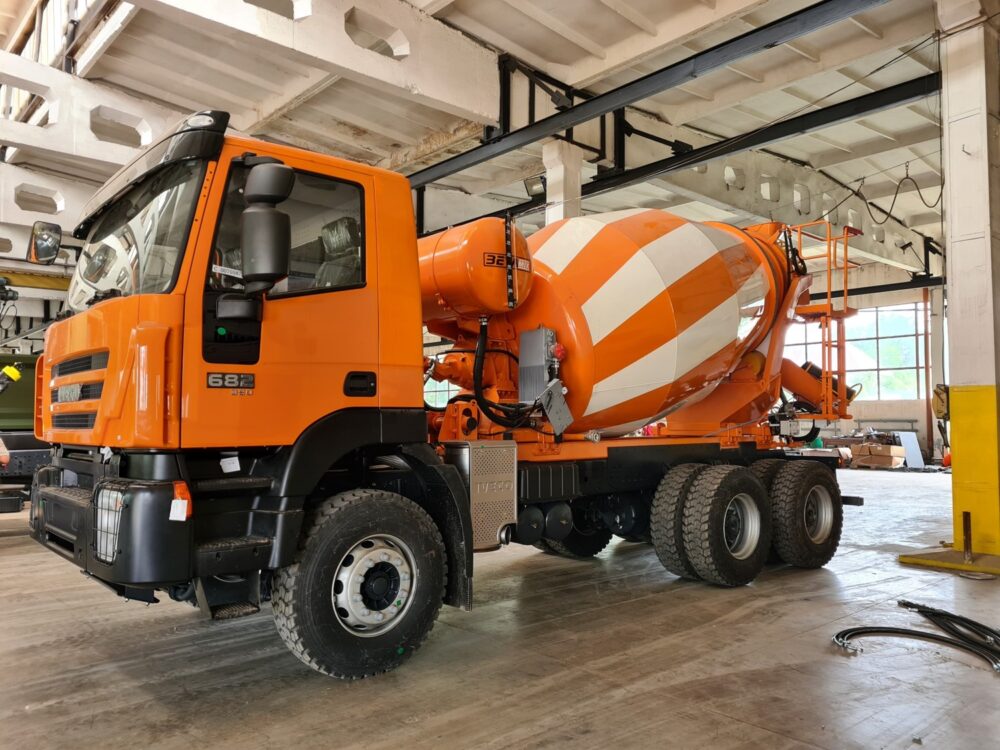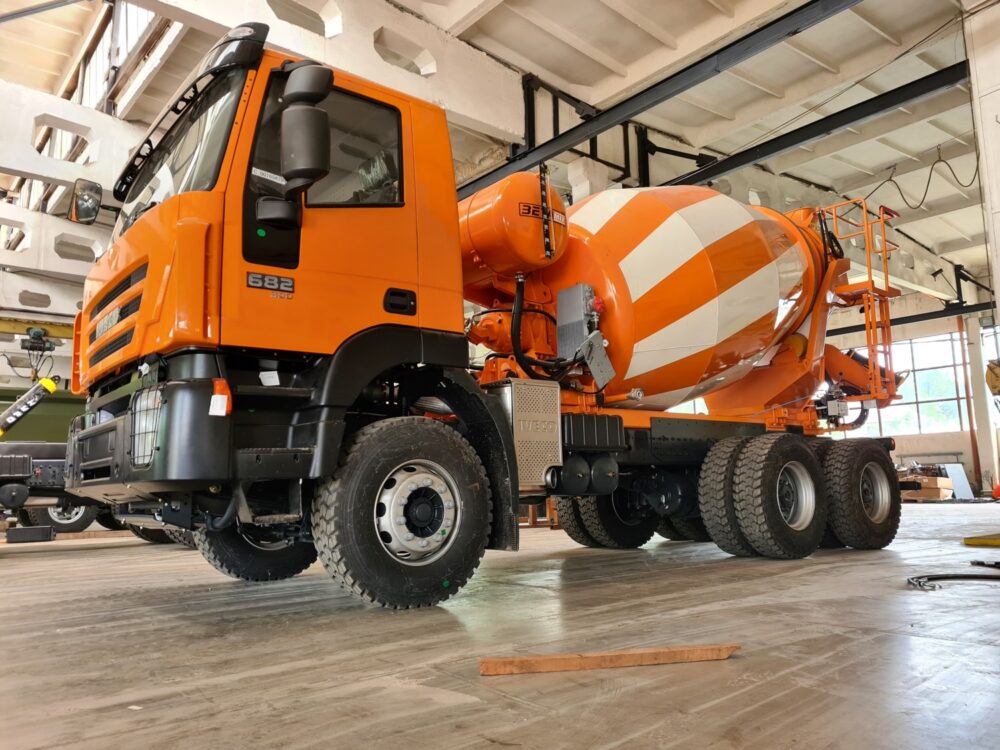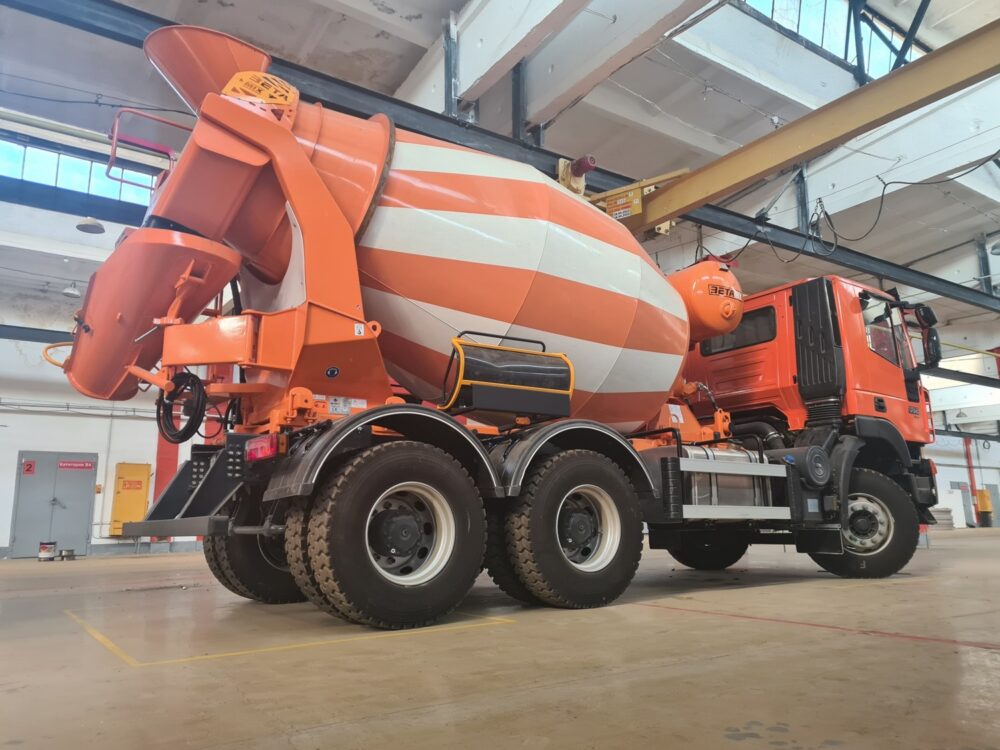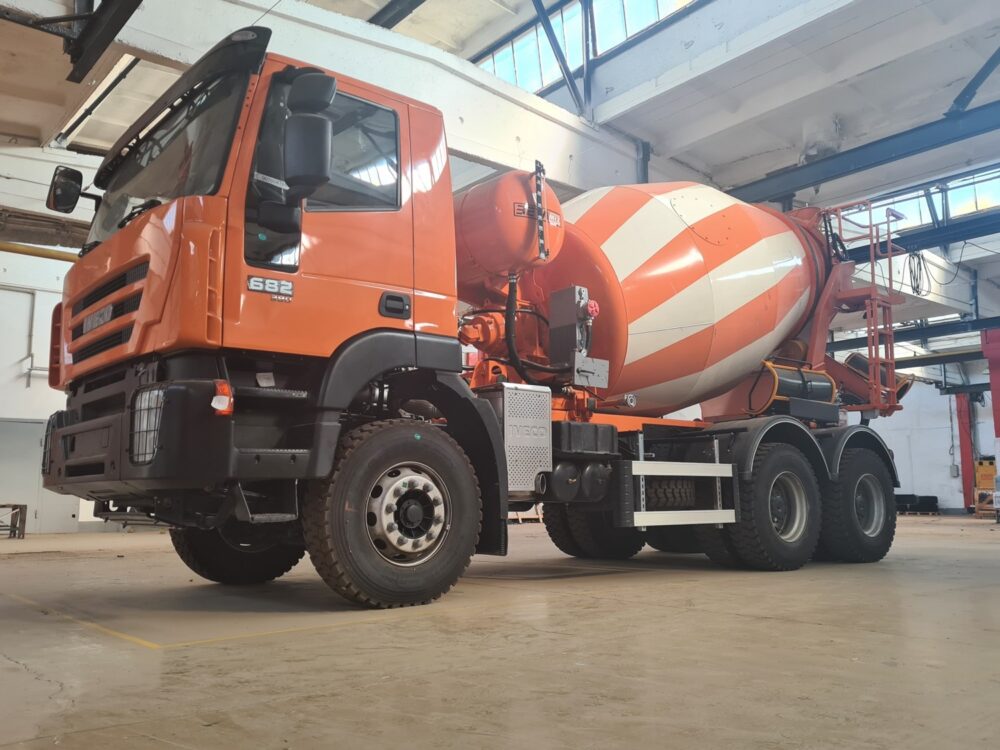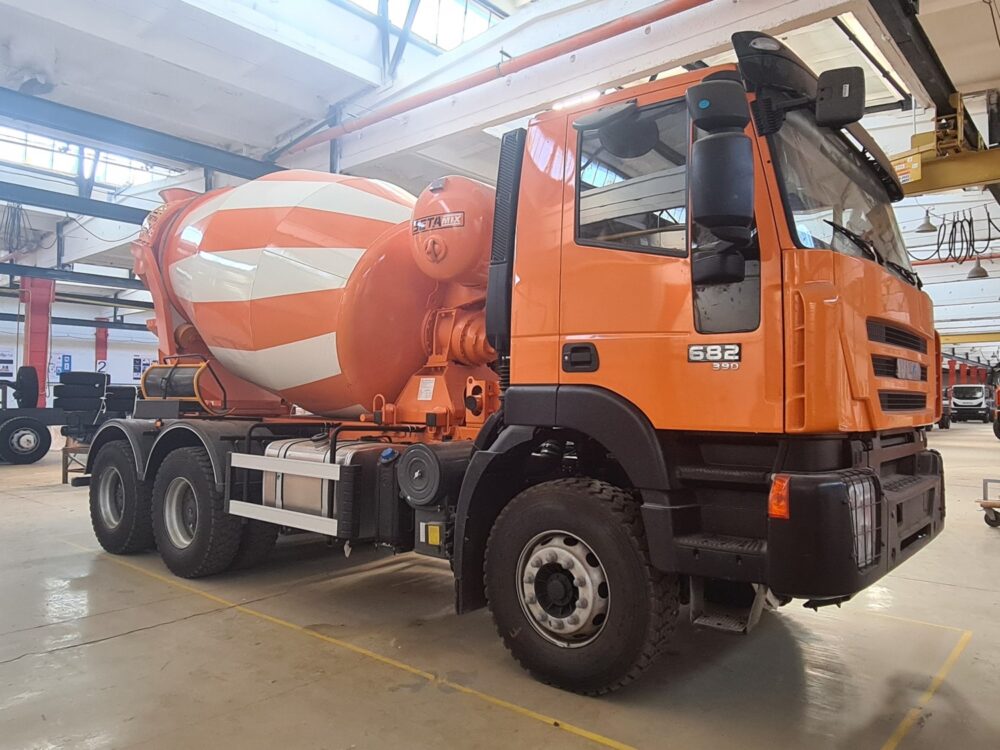TRUCK MIXER
SPECIFICATIONS
We are ready to consider the issue of manufacturing this equipment, according to the technical specifications of the Customer
NOMINAL CAPACITY
From 6 m3 to 10 m3
WIDENESS
From 2200 mm to 2350 mm
HYDRAULIC PUMP
Bosch –Rexroth (90 cm3/dev)
DRIVE SYSTEM
Powered by Truck Engine P.T.O
WATER PUMP
None / Pressurised System
CONTROL SYSTEM
Mechanical Control Box
PAINT
Tipper is painted in paint drying oven by Washing + Sanding + 2+1 coat Acrylic Paint
It will be specified according to customer request
It will be specified according to customer request
STANDARD ACCESSORIES
Metal mudguards
Reflector and tipper labels
According to customer request Company logo or sticker lines
Aluminum tipper ladders
Tool box
Plastic or chrome water tank
Reflector and tipper labels
According to customer request Company logo or sticker lines
Aluminum tipper ladders
Tool box
Plastic or chrome water tank
GEOMETRIC CAPACITY
From 10 628 liters to 16 500 liters
Filling rate 60%
Filling rate 60%
GEARBOX
ZF P-5300 (60.000 Nm)
HYDRAULIC MOTOR
Bosch –Rexroth (80 cm3/dev)
OIL COOLER
AKG 18 Liter Oil Cooler
DRUM STEEL
4 mm S500-MC steel
WATER TANK
650 Lt Air Type
SUBFRAME
140 x 80 x 8 S355J Profile Chassis
OPTIONAL SPECIFICATIONS
Additive tank 35 lt
WE'LL HELP YOU TO CHOOSE THE RIGHT EQUIPMENT
We are ready to consider the issue of manufacturing any of our equipment in accordance with the requirements of the Customer.
Leave a request, our manager will contact you shortly.
FAQ
What is the core function of a concrete mixer truck on construction sites?
A concrete mixer truck transports freshly mixed concrete while continuously agitating it to prevent setting before delivery.
How does the rotating drum system keep concrete in workable condition?
The drum rotates on an inclined axis, constantly turning the mixture using internal spiral blades to maintain consistency.
What capacities are typical for modern concrete mixer drums?
Mixer drums typically range from 4 to 12 cubic meters, depending on truck chassis and regional transport limits.
Are mixer trucks suitable for both on-site mixing and delivery?
Yes, some models offer on-site mixing via dry loading, while most are used for transporting ready-mix concrete from batching plants.
What is the difference between front discharge and rear discharge mixers?
Front discharge mixers allow the driver to control unloading from the cab, while rear discharge versions require a spotter or chute handler.
How is drum rotation controlled during transit and unloading?
Rotation speed and direction are controlled hydraulically or electronically to keep concrete moving or discharge it as needed.
Can concrete mixer trucks operate in extreme weather conditions?
Yes, mixer trucks are designed to withstand both hot and cold environments, often with insulated drums or heated water systems.
What materials are used to manufacture mixer drums for durability?
Drums are built from wear-resistant steel or composite materials, often treated with anti-stick coatings to ease cleaning.
Are auxiliary systems like water tanks or additives integrated into mixer trucks?
Many trucks include integrated water tanks, admixture systems, and chute extensions to improve control over slump and placement.
What are the safety considerations when operating a loaded mixer truck?
Safety involves managing high center of gravity, ensuring brake readiness, monitoring drum load, and using proper PPE during washout and unloading.





















